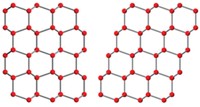Advertisement
Grab your lab coat. Let's get started
Welcome!
Welcome!
Create an account below to get 6 C&EN articles per month, receive newsletters and more - all free.
It seems this is your first time logging in online. Please enter the following information to continue.
As an ACS member you automatically get access to this site. All we need is few more details to create your reading experience.
Not you? Sign in with a different account.
Not you? Sign in with a different account.
ERROR 1
ERROR 1
ERROR 2
ERROR 2
ERROR 2
ERROR 2
ERROR 2
Password and Confirm password must match.
If you have an ACS member number, please enter it here so we can link this account to your membership. (optional)
ERROR 2
ACS values your privacy. By submitting your information, you are gaining access to C&EN and subscribing to our weekly newsletter. We use the information you provide to make your reading experience better, and we will never sell your data to third party members.
Spectroscopy
Water solvation proceeds more slowly than expected
Terahertz spectroscopy study shows that water molecules reorient around solutes on 10-ps time scale
by Mitch Jacoby
July 7, 2018
| A version of this story appeared in
Volume 96, Issue 28
Given how common water is, you’d think by now we would know just about everything there is to know about it. Not so. A new study shows that when it comes to orienting around a solute, water molecules are a lot more sluggish than generally thought (J. Chem. Phys. 2018, DOI: 10.1063/1.5034225). Years of spectroscopy experiments using lasers with short pulses, led researchers to consider water to be among the fastest-acting solvents, with a response time in the subpicosecond range. Those studies have generally been done by probing electronic properties of a water-dissolved solute, often an excited dye molecule. But rather than study water solvation from the solute’s point of view, Saima Ahmed, Peter Hamm, and coworkers at the University of Zurich used a fast terahertz (THz) vibrational spectroscopy method to carry out the experiment from water’s perspective. THz, or far-infrared, light uniquely probes collective motions of groups of water molecules—water cluster dances, in effect. By using this method, the team found that water solvated an excited dye molecule rather slowly—on the 10-ps timescale. Now the team plans to conduct related experiments on liquid water cooled below its freezing point.



Join the conversation
Contact the reporter
Submit a Letter to the Editor for publication
Engage with us on Twitter